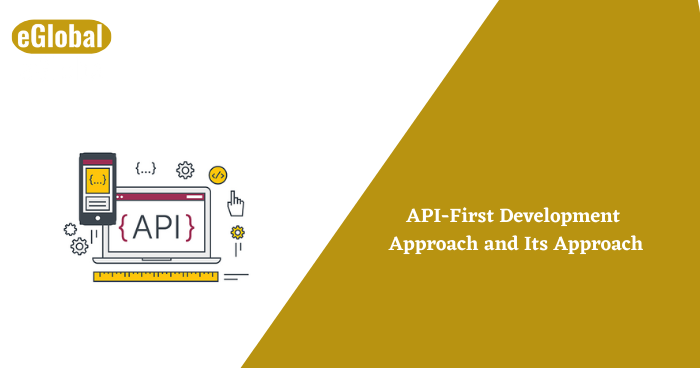

The goal of software development in the modern world is to create applications that are adaptable, scalable, and simple to maintain. The API-first strategy is one of the essential elements to achieve these objectives. We will discuss the idea of an API-first approach and its many benefits for creating better software in this article.
A software development style known as the “API-first approach” gives the application programming interface (API) design priority over all other application components, including the user interface. This strategy is predicated on the notion that the API serves as the application’s framework and that everything else is built on top of it.
Developers that employ an API-first strategy concentrate on creating a strong, adaptable API that can handle many use cases, data models, and integrations. To meet suitable and stringent security, performance, and scalability criteria, this entails establishing the API endpoints, data formats, and authentication processes.
Developers can then construct the user interface and other components of the application on top of the designed API. More adaptability and flexibility are possible with this strategy. so the program as a whole can be altered and expanded without compromising the API.
Since the beginning of software development, the idea of developing APIs first has been around. As they offered a standardized method for various applications to communicate with one another, web services like Simple Object Access Protocol (SOAP) and Representational State Transfer (REST) began to gain popularity in the early years. These allowed for the creation of mashups, which combined various APIs to create new applications, and they allowed developers to create APIs that could be used by numerous applications.
However, it wasn’t until more recently that the concept of creating the API first and then the user interface followed it in popularity. An evangelist by the name of Kin Lane first proposed the idea of API-first design in 2011. He persuaded people that by designing APIs first, developers could produce a more modular, flexible, and scalable architecture that could be tailored to various use cases and platforms.
Since that time, developing software using APIs first has gained popularity, especially for web and mobile applications. Numerous businesses have adopted it widely, including start-ups and smaller businesses as well as well-known tech companies like Google, Amazon, and Netflix.
The following fundamental tenets are crucial to its success.
Design First: Using particular tools, the API is created before any code is written. This guarantees that the API is clearly defined and satisfies the system’s requirements.
Independent development: Since the API and user interface are created separately, multiple groups can work on both simultaneously and more quickly get a product to market.
Documentation: Good documentation ensures that developers can easily understand and use the API because it provides clear instructions on how to use it and what data it returns.
Security: To prevent unauthorized access, appropriate security measures like authorization and authentication mechanisms are put in place.
Testing: It’s crucial to conduct testing to make sure the API is serving its intended purpose.
Numerous advantages of the API-first strategy can boost the effectiveness and efficiency of application development. Among the main advantages are:
Developers can build a flexible and scalable architecture that can accommodate future changes and modifications without affecting the entire application by giving priority to the API design. This enables the application to change and adapt over time, which is crucial in today’s quick-changing technological environment. By using this method, developers can benefit from micro services and other cutting-edge architectural patterns that enable more modular and scalable systems. Flexibility and scalability are therefore the biggest benefits of the API-first approach.
With the API-first methodology, developers can collaborate across departments and groups to work on various components without having to wait for any one group to finish. This is due to the fact that the API acts as the application’s building block and that other developers can share and reuse it to create new features and applications more quickly. Teams are able to work more productively as a result, and the possibility of mistakes and inconsistent application behaviour is decreased.
For instance, the UI team can work on the front-end elements and user experience while the dedicated API team concentrates on designing, documenting, and testing the API endpoints and data structures. This enables both teams to work independently while also effectively communicating and coordinating through the development phase
APIs are frequently the main point of contact between external systems and an application. Developers can make sure that security considerations are built into the architecture from the beginning by designing the API first. This can lessen the likelihood of attacks and assist in preventing security vulnerabilities. A more secure application that is less prone to hacking and data breaches can be created by developers by following industry standards and best practices for API design and security. Better authentication and authorization mechanisms, for example, can be created to guarantee that only authorized users and systems have access to the data.
Developers can start building the application much more quickly because the API is designed first. This may aid in shortening the application’s development period and accelerating time to market. Developers can produce applications more quickly and with higher quality by using an adaptive approach and putting the API first.
With the API first strategy, application changes can be made quickly and without affecting the API. As a result, maintenance is made simpler because changes can be made without necessarily altering the API.
API-first has proven to have a number of benefits and also to be reliable and this is a good thing since this is what is craved for and is what makes it stand out. In summary, API-first development can help you create more flexible, scalable, and secure applications that can be developed faster, with better collaboration between development teams.

© 2017 All rights reserved.